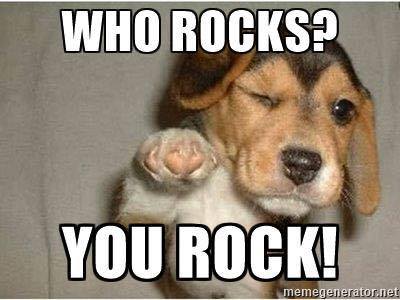SEPTEMBER
Rotation 1: Why Study History, and What Are We Doing Here?
Readings:
Modern World History Module 8 (In each Lesson assessment, complete #1- Organize Information and #2- Key Terms and people)
Selected Readings from class
Readings:
Modern World History Module 8 (In each Lesson assessment, complete #1- Organize Information and #2- Key Terms and people)
Selected Readings from class
In the 1300s, a cultural movement called the Renaissance spread through Europe. This movement led to an interest in the works of the Greeks and the Romans. Renaissance thinkers were concerned about earthly life. They did not think about it as a preparation for life after death. The Renaissance also focused on the importance of the individual. Artists focused on capturing individual character. Explorers went out to find new lands. Merchants took many risks to gain huge wealth.
|
Welcome to The Renaissance (Lyrics)
War of the roses, Chaucer's tales The brutal feudal system Holy crusades, Bubonic plague Can't say that we've really missed 'em So dark and barbaric, so dull and mundane That was so Middle Ages That was so... Charlemagne Welcome to the Renaissance With poets, painters, and bon vivants And merry minstrels Who stroll the streets of London A strummin' the lutes In puffy pants and pointy leather boots! Welcome to the Renaissance Where we ooh and aah you with ambiance We're so progressive The latest and the greatest We bring it to you with much ado Welcome to the Renaissance Where everything is new Here we've made advances in the sciences We have the latest gadgets and appliances Our mugs are made of pewter Our houses all are Tudor Decorated with a modern flair See us in our petticoats and farthingales Our trendy beards we trim to look like swallow tails We're called Elizabethans They're all a bunch of heathens Heathens heading straight for you know where While witches are burning and Wars tend to start We bring you moments of culture And art Culture and art... Welcome to the Renaissance Well our printing press has the fancy fonts That's right we're fancy And very literary, theatrical, too It's what we do Welcome to the Renaissance Where everything is new! Hey look it's Francis Bacon with a chicken What's he makin'? Well, I think he's found a way of freezing meat That's new! Hey look it's Walter Raleigh Found a new world by golly And he's brought us all tobacco What a treat! Also new! And we have a list of writers who Are always writing something new It's true! We do! Like who? Like who? Like Dekker! Whoo! John Webster! Whoo! Ben Johnson! Uh-huh And Christopher Marlowe Thomas Kyd, Thomas Middleton, Thomas Moore And our brightest star Yo, he's the bomb, the soul of the age The whiz of the Elizabethan stage He's incredible, unforgettable He's just so freakin' awesome Shakespeare! Shakespeare! We love him, we love him We love him, we love him We love him, we love him We love him, we love him His plays are so brilliant His writing's first rate His acting's incredible Isn't he great! (we love him, we love him) Isn't he great (we love him, we love him, we love him, we love him) We love him! Welcome to the Renaissance Not the one in Italy or in France No the one in England The one where William Shakespeare Is the cream of the crop The one where William Shakespeare is the top! Welcome to the Renaissance To a 16th century experience In the age that's golden The olden days are over, we bid them adieu Well hal-le-lu! Welcome to the Renaissance Where everything is new! Everything is new Welcome to the Renaissance Everything is new 'Cause Renaissance means rebirth! OctoberRotation 2: The Reformation
Readings: Modern World History Module 9 (In each Lesson assessment, complete #1- Organize Information and #2- Key Terms and people) |
Renaissance means REBIRTH. So what were we being reborn for? -or from?
During the Middle Ages, few scholars questioned beliefs that had been long held. Europeans based their ideas on what ancient Greeks and Romans believed or on the Bible. People still thought that the earth was the center of the universe. They believed that the sun, moon, other planets, and stars moved around it. In the mid-1500s, attitudes began to change. Scholars started what is called the Scientific Revolution. It was a new way of thinking about the natural world. It was based on careful observation and the willingness to question old beliefs. VocabularyRenaissance
Birth of the Renaissance The Italian Renaissance The Northern Renaissance Renaissance Achèvements Vernacular Humanism, Secular Patron Perspective, William Shakespeare Johann Gutenberg Scientific Revolution, Scientific Method, Enlightenment, Social Contract, Natural rights, Enlightened Despots The Renaissance also led people to question the Church. This questioning caused the Reformation. The Reformation was a protest movement against the power of the Church. It started out as a call for reform. It ended up producing a new division of Christianity— Protestantism.
Reformation, Indulgences, 95 Theses, Protestantism, Predestination Theocracy Catholic Reformation Elizabeth I Henry VIII Council of Trent Calvinism, Inquisition |
| 3_-_unit_3_study_guide_-_ap_european_history.pdf | |
| File Size: | 705 kb |
| File Type: | |

